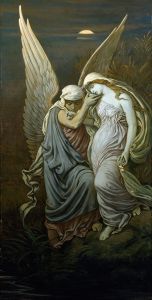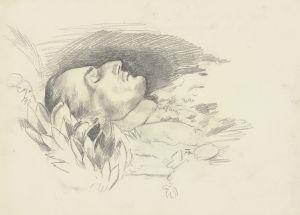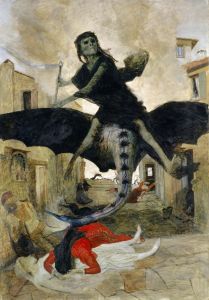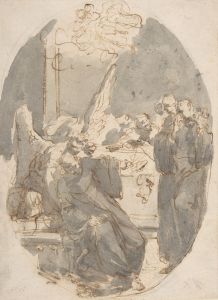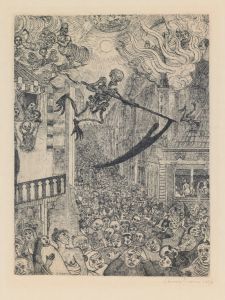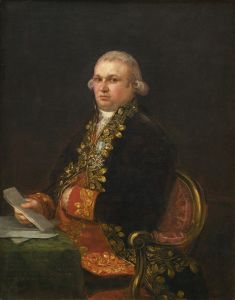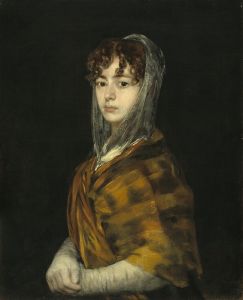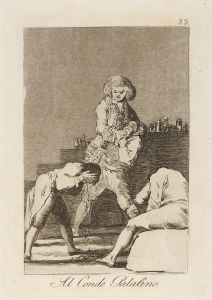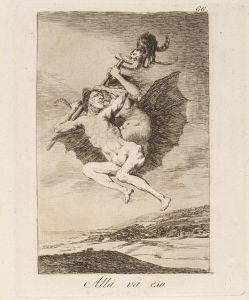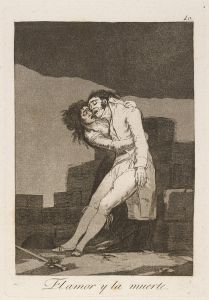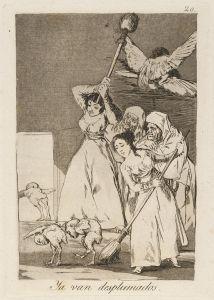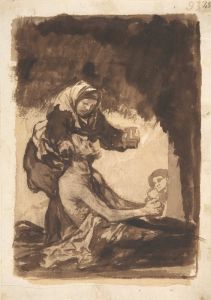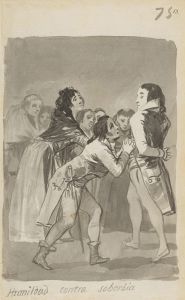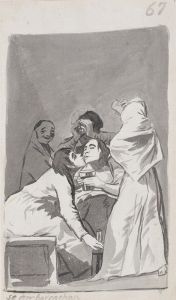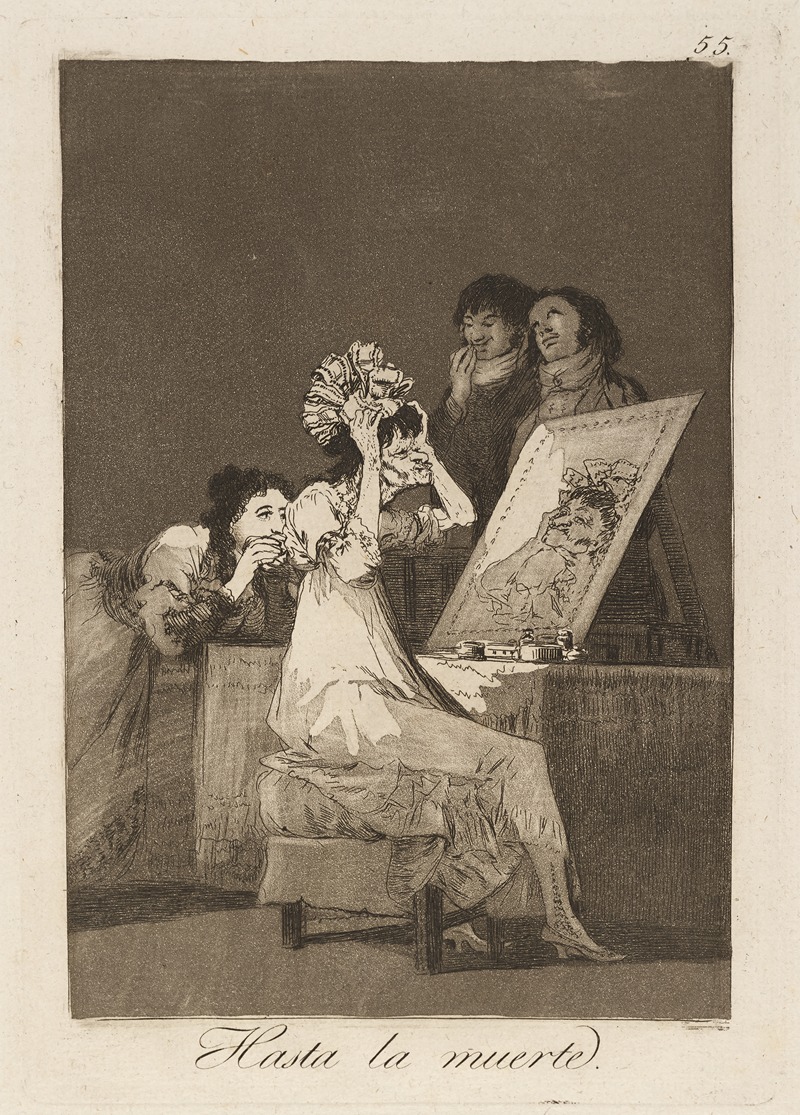
Hasta la muerte.
A hand-painted replica of Francisco de Goya’s masterpiece Hasta la muerte., meticulously crafted by professional artists to capture the true essence of the original. Each piece is created with museum-quality canvas and rare mineral pigments, carefully painted by experienced artists with delicate brushstrokes and rich, layered colors to perfectly recreate the texture of the original artwork. Unlike machine-printed reproductions, this hand-painted version brings the painting to life, infused with the artist’s emotions and skill in every stroke. Whether for personal collection or home decoration, it instantly elevates the artistic atmosphere of any space.
Francisco de Goya's "Hasta la muerte" ("Until Death") is one of the works from his series of prints titled Los Caprichos, which was first published in 1799. Los Caprichos is a collection of 80 aquatint and etching prints that satirize the social, political, and religious issues of late 18th-century Spain. The series reflects Goya's critical perspective on human folly, superstition, and the abuses of power.
"Hasta la muerte" is plate number 55 in the Los Caprichos series. The image depicts an elderly woman seated in front of a mirror, holding a fan, and seemingly applying makeup or admiring herself. She is surrounded by younger women, who appear to mock or ridicule her. The scene is often interpreted as a critique of vanity and the refusal to accept the passage of time, though Goya's exact intentions remain subject to interpretation.
The print is executed in the aquatint technique, which Goya mastered to create dramatic contrasts and textures. This method allowed him to achieve a range of tonal effects, enhancing the emotional and satirical impact of his works. The composition of "Hasta la muerte" is notable for its focus on the central figure and the interplay of light and shadow, which draws attention to the woman's face and her reflection in the mirror.
The title, "Hasta la muerte," reinforces the theme of clinging to youth and beauty even in old age. The accompanying caption in the original publication of Los Caprichos reads: "Así va muriendo poco a poco, y no pierde el tiempo," which translates to "Thus she goes dying little by little, and does not waste time." This further underscores the satirical tone of the piece, highlighting the futility of resisting the natural process of aging.
Goya's Los Caprichos series was initially sold as a set of prints, but due to its controversial content, Goya withdrew it from circulation shortly after its release. The series was later donated to the Royal Academy of Fine Arts of San Fernando in Madrid, where the original plates are still preserved.
"Hasta la muerte" remains a significant example of Goya's ability to combine technical skill with sharp social commentary. It continues to be studied and appreciated for its artistic merit and its insight into the cultural and societal norms of Goya's time.





